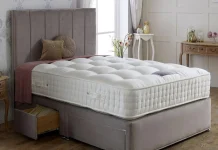
Printed circuit boards (PCBs) are a critical component of modern electronic devices and have been a cornerstone of technological progress for decades. They provide a reliable way of interconnecting electronic components with a set of carefully laid out pathways. The basic design of a PCB has changed little since its introduction in the early 20th century, yet the complexity of modern PCBs has grown exponentially as technology has advanced. PCBs are now used in a vast array of applications, from telecommunications systems to consumer electronics. As the complexity of these devices increases, so too does the need for robust and reliable PCBs. The APCT is the leading manufacturer of Printed Circuit Boards.
Understand the purpose of a printed circuit board
The printed circuit board (PCB) is an essential component in many electronic products and devices. It is a thin, flat plate of non-conductive material with a thin layer of conductive material, such as copper, printed onto it. The purpose of a PCB is to connect electrical components and carry electrical signals through the board. By understanding the purpose of a printed circuit board, you can better design your electronic products and ensure that they function properly.
Be aware of the various types of circuit boards available
When working with printed circuit boards (PCBs), it is important to be aware of the various types of circuit boards available. These include single-layer boards, double-layer boards, and multilayer boards. Single-layer boards are the most basic type, and consist of a single layer of copper and a substrate, such as glass-fiber reinforced plastic. Double-layer boards have two copper layers and a substrate, while multilayer boards have multiple copper layers and a substrate. Depending on the application, one type of board may be more suitable than the other. It is important to consider the specific requirements when selecting the type of board that best suits the needs of the project.
Know how the parts of the board interact with each other
When designing a Printed Circuit Board, it is essential to understand how the components of the board interact with each other. Each part of the board, from the power source to the transistors to the resistors, all affect the performance of the device and must be properly connected in order for the device to operate correctly. Knowing the flow of energy and data signals through the board is key to ensuring a successful design. Additionally, understanding how each board component works together to form a cohesive system will ensure that the Printed Circuit Board works reliably and efficiently.
Learn how to read the schematic diagrams for the circuit board
Learning how to read the schematic diagrams for the printed circuit board is an essential part of understanding the design and layout of a PCB. Schematic diagrams are graphical representations of the electronic components and the connections between them. They are typically used to provide an overview of the circuit and to help troubleshoot problems. By becoming familiar with the symbols and terminology used in schematic diagrams, it is possible to quickly and accurately determine the arrangement of a circuit board and any potential issues with its design.
Familiarize yourself with the production process for printed circuit boards
One of the most important steps in the production process for Printed Circuit Boards (PCBs) is familiarizing yourself with the manufacturing process. Knowing the steps and understanding the intricacies of the production process will help ensure that the finished PCB meets the requirements of the project. In general, there are three primary steps in the PCB production process: designing the board, fabricating the board, and assembling the components. Additionally, each of these steps have their own set of processes that must be followed in order to create a reliable and accurate PCB. By taking the time to gain a thorough understanding of the production process, you will be able to produce a PCB that meets the desired specifications and requirements.
Conclusion
In conclusion, Printed Circuit Boards (PCBs) are a vital component in the world of electronics and technology. They are essential for the functioning of all kinds of electronic devices, ranging from phones and computers to military systems and more. PCBs are incredibly versatile and allow for a great deal of customization, making them the perfect choice for a wide range of applications. With the right design and components, PCBs can be a reliable and powerful tool for any electronic device.







